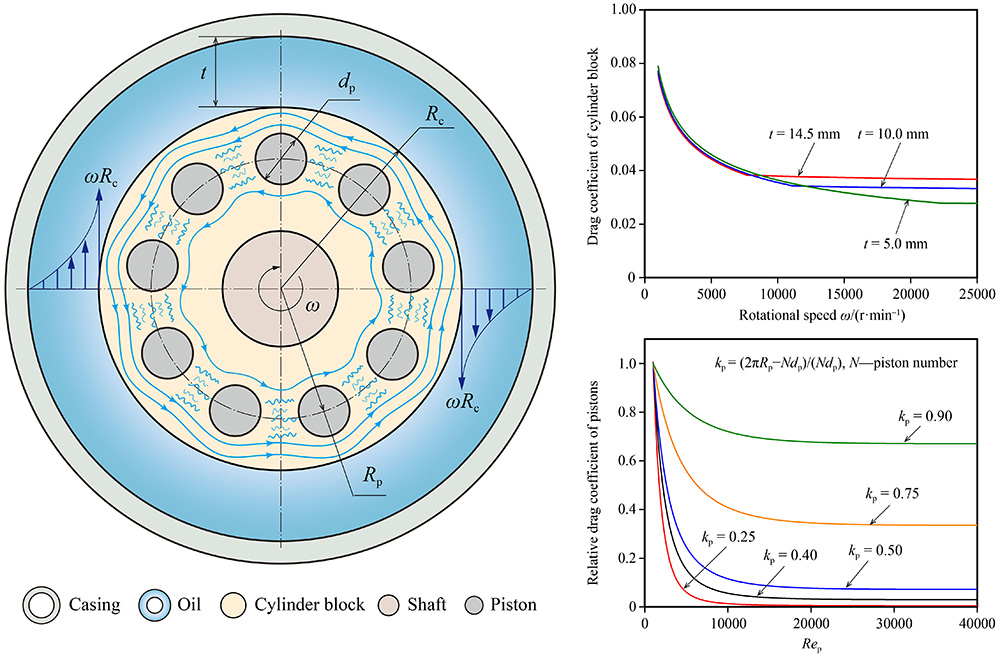The churning losses are an important contributor to the pump power losses, especially at high rotational speed, low operating pressure, and small displacement [
4,
5,
15]. Thus, they have attracted growing interest from academic and industrial communities. For example, Olsson [
4] measured the churning losses in an actual axial piston pump and estimated that the churning losses accounted for 15%–20% of the total power losses. Xu et al. [
16] and Zhang et al. [
17] established a preliminary analytical model for the churning losses and carried out computational fluid dynamics and semi-physical simulations to evaluate the effects of rotational speed on the churning losses. In particular, Zhang et al. [
17] built a specific test rig to acquire the individual contribution of cylinder block and pistons to the total churning losses by comparing the drag torques between wet and dry casings. Similarly, Jing et al. [
18] and Hasko et al. [
19] measured the churning losses of rotating parts in a commercial axial piston pump through the differences in input torque between oil-filled and empty casings. Zecchi et al. [
6] and Zhang et al. [
20] considered the churning losses in the total power losses when predicting the casing fluid temperature in an axial piston pump. Moslått et al. [
21] included the churning losses of rotating parts when deducing the torque losses in variable displacement axial piston motors. The researchers also found that the churning losses account for a large portion of power losses in other types of high-speed hydraulic pumps, such as 2D piston pumps [
22,
23] and radial ball piston pumps [
24].














